Golf World Top 100: Best Golf Courses in France
Published: Last updated:
What are the best golf courses in France? The Golf World panel ranks the top 50 layouts across the channel.
JUMP TO: 50-41 | 40-31 | 30-21 | 20-11 | 10-1
France is one of the easiest destinations for British golfers to reach for a golf break.
For most of us, certainly south of Manchester, France is the simplest trip imaginable thanks to the Eurotunnel. Having everything in your car as you make the 30-minute crossing is not to be underestimated.
Within 15 minutes you can be teeing it up at Wimereux. Le Touquet and Hardelot are a matter of minutes away and, with the addition of Belle Dune, provide a 10th of our France ranking that couldn’t be easier to access.

It’s not the only way to do it though, obviously; with cheap and short flights to Paris, Bordeaux, Geneva, Bergerac and Nice, getting to the fantastic pockets of elite golf in France is gloriously straightforward.
We try to identify those pockets for you in the line of text underneath the name of each course. So, rather than include the nearest town and the name of a region that doesn’t make much sense to anyone other than a serious Francophile, we use more general terms such as ‘south-west France’ or ‘north of Paris’. So you can go through and tally up the courses easily in each of these areas.
RELATED: Best Golf Courses in Spain
France mimics Britain in its courses. Not only that there is real depth to the quality of courses – with more high-class layouts than in any other country in continental Europe – but there is also terrific variety (from proper links to parklands to clifftops to heathlands) to the offering and a pleasing mix of historic and modern.

Their courses also benefit from the touch of revered Golden Age architects as well as the best modern designers. Ask me to choose my favourite area and I would really struggle; that’s how good the various pockets are. Paris is the obvious pick (where all but Morfontaine can be played in the summer), but Le Touquet and co. in the north and the south-west’s collection led by Golf du Medoc are exceptionally strong, too. Normandy, Brittany, the south-east and the east close to the border also have outstanding moments.
As always, we welcome your feedback on our rankings and know that everyone will have an opinion on their favourite’s position. We’d love to hear from you via email, on Twitter, Facebook or Instagram.
And, once you’ve enjoyed this ranking, please do take a look at some of our others – from the best courses in England, Scotland, Ireland and Wales, to Europe, the Middle East, USA and the world.
Chris Bertram, Golf World Top 100 Editor
THINK YOU SHOULD BE ON THE PANEL? Get in touch with us, here
Best Golf courses in France: 50-41
50. Aa Saint-Omer
Saint-Omer, north-east
Located close to the River Aa, there are 27 holes at this resort. The main 18 holes were designed by Dutch architect Joan Frederik Dudok van Heel and sit within the natural hillside landscape. A regular host of the European Challenge Tour.
49. Royal Mougins
Cannes, south coast
This well-heeled French Riviera club was created by Rattan Chadha, who founded the Mexx fashion label, in 1993.
It was carved out of a wooded valley by the American architect Robert von Hagge, who has left such a legacy in France.
48. Charmeil
Grenoble, south-east
Another entry for a Jeremy Pern design, alongside Jean Garaialde. Surprisingly flat given it is not a million miles from the Alps. A lake affects a handful of holes on this course near Grenoble.
47. Le Touquet (La Foret)
Le Touquet, north-west coast
Nestled in a mature pine forest, La Foret dates back to 1904, when it was designed by Horace Hutchinson and Nick Lane Jackson and opened by Lord Balfour, the British Prime Minister.
It was the first course to open at the famous Opal Coast club and while it has been overtaken by La Mer, it is still a fine course in its own right.
46. La Bresse
Bourg-en-Bresse, eastern border
A mix of tree-lined and open parkland holes, this course from 1990 is easy to walk and perfectly tranquil. Another Jeremy Pern design, this time near Bourg-en-Bresse in the Rhone-Alps region.

45. Hardelot (Les Dunes)
Hardelot, north coast
Regarded by all as the second course to Les Pins at the Hardelot club, Les Dunes was added in 1991 and has a reputation for being hilly.
While there certainly are still steep elevation changes, they have been softened off and it would be odd to come to this seaside town and not also play Les Dunes. There is a lot to think about at Les Dunes. Coming home, highlights among the tall pines come at two gorgeous short holes.
44. Biarritz Le Phare
Biarritz, south-west coast
Tom and Willie Dunn and later Harry Colt worked at this historic club, which dates back to 1888 and is where C.B. Macdonald saw the ‘Biarritz’ green he made popular in classic American courses.
But much of the course they shaped was lost during World War II, although the club is working to restore some old features.
It sits on the south-west coast, but is parkland in nature.

43. Dolce (Fregate)
Bandol, Toulon
A strong position for a course that is part of a fine resort, one that features consistently in our ranking of the Top 100 play-and-stay options in Continental Europe. There are two courses here, but the Fregate is the No.1, a Ron Fream design from 1992 that enjoys 15 awesome views of the Mediterranean Sea. It sits nicely in its enviable Cote d’Azur setting and offers lots of variety.
42. La Boulie (La Vallee)
Versailles, west Paris
Historic course just a stone’s throw from the Palace of Versailles which has hosted numerous French Opens, with Seve and Nick Faldo two of the champions. There are two courses here, both playing over gently undulating terrain. This Willie Park design is the pick.
41. Bondues (Trent Jones)
Lille, north-east border
A Trent Jones collaboration in the Lille area, it offers strong American-style parkland golf with rolling fairways protected by heavy bunkering and several water hazards leading to large greens.
RELATED: Great Britain and Ireland’s best links
Best Golf courses in France: 40-31
40. Albi
Albi, Toulouse
A pleasant course in the south of France, in the town dominated by the skyline of the 13th-century, Gothic, red-brick Sainte-Cécile Cathedral. The course was designed by Englishman Jeremy Pern and a handful of its holes run alongside the Tarn River.
39. Soufflenheim
Strasbourg, eastern border
Its location close to Baden-Baden and Strasbourg on the French-German border perhaps explains the choice of Bernhard Langer as architect.
The double Masters champion made a fine job of incorporating 18 lakes in this watermeadow landscape. This championship course is a stringent test off the backs.
38. Nimes Campagne
Nimes, south coast
Designed by Leonard Morandi and Donald Harradine, we really like this low-profile course that sits on a gently undulating, wooded site.
Greg Norman, Nick Faldo, Bernhard Langer, Ian Woosnan and Jose Maria Olazabal have all played here, and enjoyed the hospitality in the distinctive clubhouse, which is a mix of Stoke Park and the White House.
37. Pleneuf-Val-Andre
Pleneuf-Val-Andre, Normandy
The first half could be considered to be a warm-up for the fabulous views on the back nine, which actually start on the 9th green. But there are good holes on the front nine too and there is a constant theme of good conditioning. The dramatic downhill 10th and 11th spark a run of coastal holes of Insta-worthy quality.

36. Wimereux
Wimereux, north-west coast
Designed in 1901 by Guy Campbell and Cecil Hutchinson – the men behind West Sussex among others – Wimereux is 6,800 yards off the tips and if it is especially windy you are wise to play off the 6,100 yellows.
Expect cool, bulb-shaped greens, blind shots, classy par 3s, views of our own White Cliffs, the adjacent dunes and the ocean. An easy-to-enjoy, unpretentious links, just minutes from Calais.
RELATED: Best Golf Courses in Italy
35. Chateau de Taulane
Grasse, south coast
One of France’s leading golf resorts, incorporating a four-star hotel within the castle or manor as well as one of the country’s finest courses.
It was designed by Gary Player and sits at the foot of the Provencal hills and, as well as being a beautiful experience, Player’s design is bursting with a variety of holes.

34. Belle Dune
Fort-Mahon-Plage, north-west coast
Fort-Mahon-Plage is the romantically-named location of one of the under-rated jewels of the Opal Coast in northern France. It sits on sand – in the huge Marquenterre dune – but it’s not a links, rather a woodland-heathland principally dominated by pines.
The holiday homes that are visible from a few holes are so neat, colourful and tranquil they are like a toy town, while holes such as the breathtaking downhill short 3rd and the stellar 18th make this a must visit.
33. Joyenval (Retz)
Chambourcy, west of Paris
Regarded as the second course at this distinguished Parisian club, but do not underestimate the Retz. It enjoys the same level of technical excellence as its sister (the Marly) as it weaves between woodland and along the valleys that give holes real character.
RELATED: Best Golf Courses in Britain and Ireland
32. Limere
Orleans, south of Paris
Located in the Sologne forest near Orleans, in a little pocket of excellent golf with Les Bordes and Les Aisses just south of Paris, Limere is a fine Cabell B. Robinson design from 1992.
Fairways are lined by trees, but there are wide playing corridors – however, it is a proper test of strategy and execution as a result of so many dog-legs.
31. Paris International
Attainville, north Paris
This Jack Nicklaus design, with long-time associate Ron Kirby doing much of the work, offers wide fairways cutting through avenues of mature trees. Water hazards and large, undulating greens also characterise one of the capital’s leading modern courses.
RELATED: The most fun courses to play
Best Golf courses in France: 30-21

30. Terre Blanche (Le Riou)
Grasse, Nice
Mixing spectacular views with delightful holes and a pristine level of conditioning with the wonderful smell of Provence flora, the No.2 course at Terre Blanche is a wonderful, playable experience.
Expect enough of a challenge though, measuring a hefty 6,567 yards off the tips and with often acutely undulating fairways, funky greens and deep bunkers. You can also expect breathtaking views of picture-postcard villages as well as of the gorgeous Provencal countryside.
A venue for the Ladies European Tour Access Series – the Terre Blanche Ladies Open – it is strong right to the end, the last being a classic, tantalising par 5 that sweeps left to right with a stream on the inside of the hole leading to a greenside lake.
29. Chantilly (Longeres)
Chantilly, north Paris
The Longeres is a full-size ‘second’ course of around 6,400 yards that sits on similar parkland to Chantilly’s No.1 attraction, as well as also having a woodland phase.
It was 18 holes initially, but reduced to nine after World War II and it wasn’t until 1988 that more holes were added in woodland, with Donald Steel setting them down.
Three of these Steel holes are used as a composite course with the Vineuil, giving a sense of how equal in quality the two courses are. Steel actually built 13 holes in the forest, meaning four holes of the original Longeres are now not in use.
28. Barbaroux
Brignoles, Toulon
You expect drama from Pete Dye and Barbaroux does not disappoint. Built in tandem with son P.B. Dye, Barbaroux is entertaining at every turn, whether you are having to clear a vineyard to reach the fairway or putting on the largest green in Europe (76 yards long).
Packed with architectural flair as it unfolds among mature trees and among water hazards – there are three lakes on one hole – this is a thrill-a-minute experience.
27. Courson (Vert/Noir)
Breuillet, south-west Paris
Another entry for Robert von Hagge and once more he was ably assisted by his long-time associate Rick Baril on the Vert and Noir loops of this 36-hole club (in addition to the green and black nines, there’s also the lilac and orange).
It does not stray too far from the Von Hagge mould, with baroque shaping down the sides of the fairways and extravagant green complexes.
Expect an American feel, unsurprisingly, with water hazards adding to the difficulty, but there are also some surprising touches that elevate it beyond the norm, such as astute use of grass bunkers.

26. Evian
Evian-les-Bains, eastern France
In 1904, the Evian mineral water company bought the farm and land belonging to the Berthet family and built a nine-hole course with the upcoming opening of the Hotel Royal at the front of their minds.
Located at an altitude of 500m, overlooking Lake Geneva, one of the first golf courses in France was an immediate success with visitors enchanted by its magnificent views and ambiance, which was immortalised by
the writer Lamartine.
The incomparable view of Lake Geneva and the Alpine peaks are the constant backdrop to the new 18-hole course. A comprehensive renovation by Cabell B. Robinson at the end of the 1980s was followed two decades later by another significant and successful upgrade.
Stretching to 6,595 yards, Evian Resort tests and charms the leading women players in the world every year when they meet on the banks of Lake Geneva at The Evian Championship, now a Major championship.
25. Hossegor
Capbreton, south-west coast
France’s answer to Little Aston. Laid out among mature trees, large but low-lipped bunkers are dotted around lush parkland fairways. The greens are flawless, and notably soft and receptive; you can score well if you can keep it straight off the tee.
The back nine sits on more sandy soil as it moves along a series of dog-legs.
24. Saint-Nom-la-Breteche (Red)
Saint-Nom-la-Breteche, west Paris
There are two courses here, the Blue and the Red, and when events are held – such as the French Open, Lancome Trophy or the Seve Trophy – a composite layout is used.
That said, only the 1st is used from the Blue, with the 6,738-yard Red otherwise regarded as the premier track.
Fred Hawtree laid out both courses in woodland on the edge of the Marly-le-Roi forest.
23. Saint-Cloud (Vert)
Garches, central Paris
The course was founded in 1913 as part of an expansive sporting club – polo was staged on the 3rd green here in the Paris Olympics.
Harry Colt was engaged to lay out the course and made an inevitably good job of adding panache and style to a parkland that includes significant movement in its terrain.
Cool par 4s, a fabulous view of the Eiffel Tower and clever bunkering add to the appeal of the Vert, 14 times a host of the French Open.
22. Joyenval (Marly)
Chambourcy, central Paris
Joyenval is a Robert Trent Jones Snr design which enjoys a magnificent setting in the former hunting grounds of the kings of France yet is just 10 minutes from the heart of Paris.
The course has largely fallen under the radar because it is a private club, but the Marly course in particular really is outstanding. A fine example of modern and challenging architecture, it also provides a wonderful atmosphere and experience – aided by impressive amenities, service and restaurant.
21. Sperone
Bonifacio, Corsica
It looks like it belongs in the Indian Ocean or the Caribbean, given several holes are lapped by flawless turquoise waters – and that setting is the strength of this Robert Trent Jones design on Corsica.
The front nine weaves inland, a steady warm-up for what is to follow on the back, which for five holes from the 12th to the 16th is breathtaking. One of Europe’s most dazzling experiences.
RELATED: Best Golf Resorts in the World
Best Golf courses in France: 20-11

20. Dinard
Dinard, Brittany
Dinard was founded by former British army officers who had returned from service in India and Egypt to northern France at the end of the 19th century and were keen to put their imprint on their new home.
In addition to “sea bathing, the arrival of the railway and France’s first tennis club”, as Dinard’s history records, the Brits also sought to create a golf course. They chose their site astutely, 50 hectares of gorse-covered heath and dunes which was home to sheep and a few cows. It was also on sandy soil, overlooking the sea.
Scottish architect Tom Dunn made the most of the land and it opened in 1887, becoming the second oldest in France after Pau (1856). It was mined during the World War II, but reopened in 1949 and remains unexpectedly quirky which, along with the sea views from all 18 holes, makes it one of France’s top 25.
19. Kempferhof
Strasbourg, north-east France
Robert von Hagge is a strong theme throughout our France ranking and here he is again in the top 20, this time carving out this 1990 course among 100-year-old oak trees, a number of water hazards, undulating greens and huge bunkers.
It sits on the banks of the Rhine, 15 minutes from Strasbourg, and comprises 13 water hazards in a tranquil round.

18. Moliets
Capbreton, south-west coast
The front nine in mature woodland sees holes weave between tall pines and over distinctive mounds before, on the back nine, you emerge onto a scene very rare in Continental Europe – genuine linksland.
And it is spectacular stuff, a huge bank of pure white sand stretching up the left edged by a carpet of rolling, vibrant-green fairway. The sound of the Atlantic waves crashing in the background makes this run of holes one of the most thrilling and scenic on the Continent.
17. Granville
Bréville-sur-Mer, Normandy
The search for a true links course in Continental Europe is often a fruitless one – but here in the north of France there is something as close to the kind of experience we would expect in Britain.
The course celebrated its centenary in 2012, but it was the work of the great Harry Colt and Charles Alison in 1921 that is so revered.
Sitting on delightful, rippling, sandy terrain among low-lying dunes, there are plenty of reasons to savour Granville.
It could be the spectacular views over the course and out to sea towards Jersey. Or it could be the classic Colt green complexes. Or it could be the variety of holes in all directions that make the breeze a factor and Granville such a strategic proposition.
16. Les Aisses
Orleans, south of Paris
Originally designed by Frenchman Olivier Brizon, Les Aisses was renovated by Martin Hawtree in 2010. It had been a 27-hole complex of Red, Blue and White loops, but Hawtree divided those nines into a distinct 18-holer backed up by a nine-holer, formerly the Blue and now La Canne (‘the rushes’).
The beautifully undulating fairways are relatively generous, but are populated by prominent drive bunkers as well as gorgeous heather. The greens are also guarded by proper bunkers.
15. Chiberta
Biarritz, south-west coast
English architect Tom Simpson created this hybrid course, which is mainly tree-lined parkland but has a stellar section next to the Atlantic Ocean.
Laid out by Simpson in 1926, the holes towards and alongside the Atlantic might be the highlight but the closing quartet have as much if not more architectural merit than the more explosive seaside holes.\

14. Seignosse
Bayonne, south-west coast
When this Robert Von Hagge design from 1989 is described, it is usually in a fearful tone. That caution and reverence is not misplaced. This is a beautiful course among mature trees and natural water features – but it is also an exacting challenge.
A woodland-heathland hybrid, it has design elements more often seen on an old seaside links: sporty par 4s, humps and bumps and strategic dog-legs.

13. Golf du Medoc (Vignes)
Pian Medoc, Bordeaux
The No.2 course at Medoc was laid out by the Canadian Rod Whitman – the trusted associate of Bill Coore, who designed Le Chateaux.
The Vignes begins with a trio of perfectly pleasant holes in more of a woodland-parkland setting, but you are pleased to be soon back among the heather and pine scenes Golf du Medic is famed for. A spectacular set of par 3s.

12. Morfontaine (Valliere)
Senlis, north Paris
So often overlooked, but it really shouldn’t be. It is hard to imagine there is a better nine-hole course anywhere in the world.
Riotous fun on a course that has three each of par 3s, 4s and 5s – with no hole more than 450 yards long. Greens that look like they belong in the Himalayas putting club in St Andrews.

11. Le Golf National (Albatros)
Guyancourt, south-west Paris
The Ryder Cup course begins with an opening hole that leaves little in the tank, dominated by water and summing up the Albatros experience; thrills, drama and nervous shots are never more than a few minutes away. It boasts one of the most exciting finishes in Continental Europe, too.
Man-made and manufactured it might be, but its architects and especially shapers have turned flat farmland into a course widely regarded as one of the best on the European Tour.
RELATED: Best Golf Courses in Portugal
Best Golf courses in France: 10-1

10. Hardelot (Les Pins)
Hardelot, north-west coast
While Le Touquet got Harry Colt, at Hardelot it was Tom Simpson. This noted creator of heathland masterpieces arrived in 1931 but like Colt’s La Mer it had lost its allure in recent decades.
Like La Mer, a Patrice Boissonnas-Frank Pont restoration – notably through tree management that has improved strategy, turf and aesthetics – as well as a thorough bunker and greens overhaul has reaped reward and Les Pins is now in the top half of our continental ranking.

9. Saint Emilionnais
Saint Emilionnais, Bordeaux
A notable position for this new Tom Doak design in south-west France.
The course sits in a valley on undulating terrain dissected by natural streams and populated by stout oaks and slim pines.
Within three holes, it has captivated you. Fun, playable and packed with variety – a new superstar in Continental Europe.

8. Terre Blanche (Le Chateau)
Grasse, Nice
In the 1990s, billionaire entrepreneur Dietmar Hopp, the founder of software giant SAP, developed the Terre Blanche resort after falling in love with the landscape of Provence.
It has been a successful venture, it’s fair to say, with Terre Blanche being named our No.1 Resort in Continental Europe for the past decade.
While Le Riou – laid out around the clubhouse and hotel so that some fairways run alongside some villas – is a pretty younger sister to Le Chateau, it is this course that has played the key part in that ranking.
Hopp handed the task of routing both courses through the hundreds of hectares of forest to Dave Thomas, and while the terrain’s often steeply undulating nature must have brought its challenges, the site will have otherwise offered an embarrassment of riches. With a wealth of mature trees and inspiring views, Thomas created one of Continental Europe’s finest courses.
It sits seamlessly in the landscape, and credit must go to Thomas for assimilating the vast bunkers of white sand, the ravines, the huge greens, the thousands of mature trees and the water features so skilfully.
There is a tranquility to your round that is very rare. You see other golfers on adjoining holes, but their game never affects yours. You rarely even hear other shots being struck, with greens and tees often significantly apart.
This is ‘Millionaire’s Golf’; the feeling you have a course to yourself and that it is conditioned to absolute perfection. The shrubs and the borders are immaculate, never mind the slick, flawless greens and tees that are as smooth and as flat as a marble worktop.
Yet it also consistently asks you searching questions, whether in avoiding drive bunkers and trees off the tee – such as at the par-4 15th – or in holding tiny greens such as on the holes that precede and follow it.

7. Le Touquet (La Mer)
Le Touquet, north-west coast
La Mer was losing its stardust until this 1931 Harry Colt classic was manifestly transformed by co-designers Patrice Boissonnas and Frank Pont.
This is a course on its way to the top 20 of the continental ranking, once Boissonnas and Pont complete their sensitive restoration of the raw linksland and Colt’s holes.
A long-time favourite with British golfers, now back to its best.

6. Saint-Germain
Chambourcy, west Paris
This might be one of Harry Colt’s relatively less-known designs, but we think it deserves top billing, a classic piece of architecture to the west of the city.
It could be argued this should be regarded as one of his most impressive results, for the land with which he was given to work was flat and featureless.
Colt was a master of green complexes and the ones he created here are fabulous, full of character and nuance. Saint-Germain are keen to emphasise their Colt heritage and a discreet tree removal programme in the last decade has given it a more open feel and improved the turf.

5. Golf du Medoc (Chateaux)
Pian Medoc, Bordeaux
Bill Coore laid out this heathland course before he formed the hottest design team in golf with Ben Crenshaw.
Golf du Medoc would not have been created if the soil at Pian Medoc was the chalk-on-limestone base that dominates the region and is so conducive (along with the climate) to wine making – vines would have been planted there. But instead there is sandy turf and, as a result, pines, gorse and heather; a heathland paradise for golfers, 10 miles from the Atlantic Ocean.

4. Chantilly (Vineuil)
Chantilly, north Paris
There aren’t too many occasions when a course on the Continent is at least a match for the best of its type in Britain and Ireland – but Chantilly might be one.
This woodland-parkland course oozes quality, as indeed one might expect from a course situated within this fabled suburb north of Paris. In ambience, if not quite the character of the course, it is Swinley Forest transported to the north of Paris.

3. Fontainebleau
Fontainebleau, south-east Paris
From the moment you step on to the 1st tee at Fontainebleau, in the shadow of the old-worldly, Norman-style clubhouse, you are in awe of its beauty. In the distance, a boulder-studded hill towers over the green; this is an early highlight on a course of consistent excellence.
Then, at the par-5 3rd, the panoramic view is even more stunning: from the elevated tee the vast forest of Fontainebleau stretches out beneath you as far as the eye can see.
Late in the round comes the outstanding 16th, which European Tour champion Gregory Havret says is the best par 4 in France.
As Fontainebleau weaves through the forest and you pass rocks, bracken, heather as well as pine, birch, beech and oak trees, you realise that on these former royal hunting grounds, Tom Simpson crafted a work of art on to a natural landscape perfect for the game of golf.
Hardly any hole resembles any other, but many force you to make tough tactical choices. Should you lay up with your second at the short par-5 12th – or attack the green and risk your shot rebounding into the trees
off the intimidating rocks occupying its approaches?
Venerable, immaculately kept and, above all, picturesque, the course is short by today’s standards. But woe will befall the golfer who is not fairly straight off the tee, not handy with a sand wedge (you’re bound to find a couple of the 103 bunkers) or is unnerved by tricky, undulating greens. This beauty is not easily seduced.
It would be a worthy No.1 – and with some tree management would be even closer to that position – and would be top in arguably every other country in Continental Europe. Happily, it is accessible to selected visitors Monday to Wednesday and at the weekends in the height of summer when Parisians head for the coasts on holiday. Take your chance; you won’t regret it.

2. Les Bordes
Orleans, south of Paris
Few courses possess the mystique of Les Bordes. Only properties such as Vidauban – which we did not consider for our France ranking as a result of too few panellists having played it – and Queenwood retain as much reverence, with the common denominator the exclusive nature of these clubs and the thirst for knowledge such reclusive escapes inevitably engender.
The morsels of information about these courses that do emerge serve only to enhance the fascination, exaggerated as they are by being passed on like Chinese whispers.
The often-intriguing back stories to these clubs merely heightens the allure of playing the course. That is very true of Les Bordes.
Situated two hours’ drive south of Paris in majestic woodland that was previously reserved for the enjoyment of French kings hunting boar and stag, Les Bordes was born in 1986 out of a friendship between Marcel Bich, the man behind the Bic pen and disposable razor empire, and his trader partner Yoshiaki Sakurai. For nearly 30 years, it has remained one of the world’s most private clubs.
Robert von Hagge, the American architect, was tasked with laying out the course and his masterpiece was ranked as our No.1 in Continental Europe from 2009 to 2013.
Les Bordes is extremely private, but those fortunate enough to have played here all speak of its tranquility, conditioning, beauty and challenge. The course is groomed meticulously. It looks and plays as if the greens are not merely hand cut, but painstakingly snipped with nail scissors and finished off with tweezers and a comb.
Adding to the escapism is the silence among the woodland, which is almost eerie, with the only sounds of golfing combat and wildlife scurrying around the forest floor.
It is much more than pretty and serene though – in fact, it is one of the most unremittingly exacting courses in Europe. It stretches to over 7,000 yards, yet it is far from length alone that challenges, with a legendarily small number of players who have broken par off the backs.
A beautiful beast, and what a course to have at No.2.

1. Morfontaine (Grand Parcours)
Senlis, north Paris
France’s No.1. Continental Europe’s No.1. One of the few courses in Continental Europe that would get into a European Top 100 that included GB&I’s finest. Morfontaine is a heathland paradise created by Tom Simpson and in more recent times tweaked by Kyle Phillips (to greatest extent on the par-5 12th).
Located close to Chantilly, to the north of Paris, this is a gorgeous heathland-woodland course, an idyllic scene of pines, heather and perfect turf.
As long as you aren’t too wild off the tee, you will not spend ages looking for balls – it’s the sort of place where mid-handicappers will be having a very bad day if they lose more than one.
Yet it is far from a pushover and is definitely a second-shot course. Some greens are probably as much as four clubs’ difference depending on the pin position and many pins can be perched at the top of false fronts, which have serious consequences if you come up short.
It is famously exclusive and really a course for members and their guests. But if you are sufficiently resourceful, you can find a way on.
READ NEXT: Best Golf Resorts in Europe
ABOUT THE AUTHOR

Chris Bertram is the Golf World Top 100 Editor.
He was born and brought up in Dumfriesshire and has been a sports journalist since 1996, initially as a junior writer with National Club Golfer magazine.
Chris then spent four years writing about football and rugby union for the Press Association but returned to be Editor and then Publisher of NCG before joining Golf World and Today’s Golfer as Senior Production Editor.
He has been freelance since 2010 and when he is not playing and writing about the world’s finest golf courses, he works for BBC Sport.
A keen all-round sportsman, Chris plays off 11 – which could be a little better if it wasn’t for hilariously poor lag putting which has to be seen to be believed.
-
 The best golf courses in France.
The best golf courses in France.
-
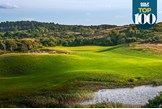 Belle Dune is one of the best golf courses in France.
Belle Dune is one of the best golf courses in France.
-
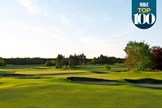 Chantilly Vineuil is one of the best golf courses in France.
Chantilly Vineuil is one of the best golf courses in France.
-
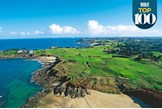 Dinard is one of the best golf courses in France.
Dinard is one of the best golf courses in France.
-
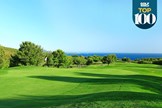 Dolce's Fregate is one of the best golf courses in France.
Dolce's Fregate is one of the best golf courses in France.
-
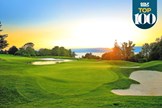 Evian is one of the best golf courses in France.
Evian is one of the best golf courses in France.
-
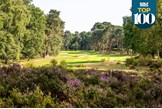 Fontainebleau is one of the best golf courses in France.
Fontainebleau is one of the best golf courses in France.
-
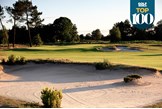 Golf du Medoc's Chateaux is one of the best golf courses in Europe.
Golf du Medoc's Chateaux is one of the best golf courses in Europe.
-
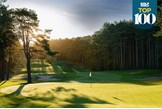 Hardelot's Les Dunes is one of the best golf courses in France.
Hardelot's Les Dunes is one of the best golf courses in France.
-
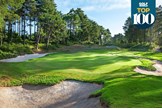 Hardelot Les Pins is one of the best golf courses in France.
Hardelot Les Pins is one of the best golf courses in France.
-
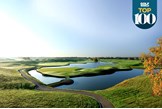 Le Golf National's Albatros is one of the best golf courses in Europe.
Le Golf National's Albatros is one of the best golf courses in Europe.
-
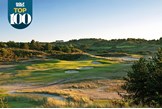 Le Touquet's La Mer is one of the best golf courses in France.
Le Touquet's La Mer is one of the best golf courses in France.
-
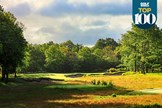 Les Bordes is one of the best golf courses in France.
Les Bordes is one of the best golf courses in France.
-
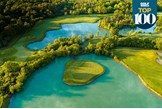 Les Bordes' original course is one of the best in France.
Les Bordes' original course is one of the best in France.
-
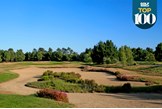 Golf de Medoc is one of the best golf resorts in the world
Golf de Medoc is one of the best golf resorts in the world
-
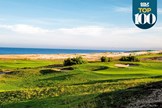 Moliets is one of the best golf courses in France.
Moliets is one of the best golf courses in France.
-
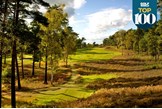 Morfontaine's Valliere is the best golf course in Europe.
Morfontaine's Valliere is the best golf course in Europe.
-
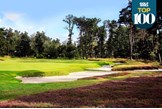 Morfontaine's Grand Parcours is the best golf course in France.
Morfontaine's Grand Parcours is the best golf course in France.
-
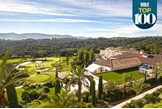 Royal Mougins is one of the best golf courses in France.
Royal Mougins is one of the best golf courses in France.
-
 Saint Emilionnais is one of the best golf courses in France.
Saint Emilionnais is one of the best golf courses in France.
-
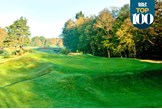 Saint-Germain is one of the best golf courses in France.
Saint-Germain is one of the best golf courses in France.
-
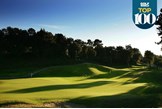 Seignosse is the best golf course in France.
Seignosse is the best golf course in France.
-
 Terre Blanche has one of the best golf courses in France.
Terre Blanche has one of the best golf courses in France.
-
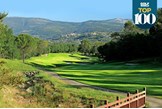 Terre Blanche's Le Chateau is one of the best golf courses in France.
Terre Blanche's Le Chateau is one of the best golf courses in France.
-
 Terre Blanche's Le Riou is one of the best golf courses in France.
Terre Blanche's Le Riou is one of the best golf courses in France.
-
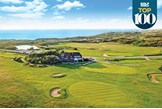 Wimereux is one of the best golf courses in France.
Wimereux is one of the best golf courses in France.





